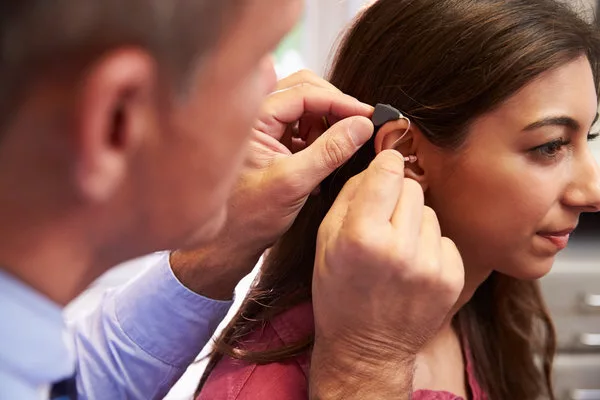A Choice of World- Standard ENT Treatment
February 22, 2016
We hear the sounds when the brain receives electrical signals from ear via nerves. SO BRAIN NEVER RECEIVES SOUND. If we are able to make electrical signals reach the brain, we will be able to make even the deaf hear. This is the underlying principle in hearing rehabilitation.
Cochlear Implant –
The cochlear implant is a small intricate electronic device, used in patients who are profoundly deaf severely hard of hearing. It is implanted by Microscopic surgery to produce useful hearing in these patients who do not benefit from hearing aids.
How does it work?
The sound is picked up by the microphone and interpreted by the sound processor. The interpreted sound is delivered through a transmitter coil to the implanted receiver. The implanted receiver sends the electrical signals through the electrodes placed in the cochlea. These electrical signals are then sent to the brain which interprets as sound.
The External Components –
- The sound is picked up by a microphone and sent to the speech processor.
- The speech processor converts the sound information into electrical signals.
- These signals are sent to the transmitter coil located behind the ear which is held in place by a magnet.
- The transmitter coil converts the electrical signals to a signal which can be sent to a receiver/stimulator device implanted under the skin behind the ear.
- The external device (i.e. the speech processor and headset) may be worn or taken off as required.
The Internal Components –
- The receiver/stimulator converts the signals from the transmitter back into electrical signals.
- These electrical signals are sent to an electrode array which lies inside the cochlea (the inner ear) and these stimulate the hearing nerve.
- The nerve impulses travel to the brain and are recognized as sounds.
Who is eligible to receive a Cochlear Implant?
A number of medical and audiological assessments are required to determine if a Cochlear Implant is the treatment of choice. The results of these tests allow the Clinicians to advise people on the benefit they may gain from the device.
Generally, the following criteria apply –
- The potential recipient must have a severe to profound sensory – neural hearing loss in both ears.
- They must gain little or no benefits from the use of hearing aids.
- The ears must be free from infection.
- The inner ear must be medically suitable to undergo surgery.
- They and their family must have realistic expectations of the implant.
- They need to be aware of the impact of the device on themselves and their family.
Expectations from Cochlear Implant –
How much benefit a person receives from a Cochlear implant depends on the following factors?
- Duration of deafness
- Amount of previous hearing
- Age at implantation
- Status of the hearing nerve
- Post-operative rehabilitation
- Motivation and family commitment
Benefits of Cochlear Implant –
Some of the benefits of the Cochlear implant are –
- Increased access to environmental sounds
- Ability to understand speech without lip‐ reading
- Appreciation of music
- Use of Telephone
Also read: How Hearing Disability in Children is Overcome.
NOTICE BOARD
CONTACT US
CONTACT US
 Book Appointment
Book Appointment


.svg)
.svg)
.svg)
.svg)








